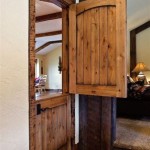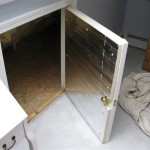How Much Does It Cost to Paint a Whole Interior House?
Painting a home's interior is a popular renovation project, offering a relatively quick and cost-effective way to refresh living spaces. However, accurately estimating the total cost can be challenging due to various contributing factors. This article explores these factors, enabling homeowners to develop a realistic budget.
Size of the House: Perhaps the most significant factor influencing cost is the home's size. Larger homes naturally require more paint and labor, directly increasing overall expenses. Square footage is the standard unit of measurement used by professional painters when estimating costs. Therefore, knowing the total square footage of the paintable wall area is crucial for accurate budgeting.
Number of Rooms: While related to size, the number of rooms offers a different perspective on project scope. Even within homes of similar square footage, a house with numerous smaller rooms typically costs more to paint than one with fewer, larger rooms. This is due to the increased time spent on edgework, such as trimming around doors and windows, which is more prevalent in homes with many rooms.
Ceiling Height: Standard ceiling height (typically 8 feet) is factored into most basic estimates. However, homes with higher ceilings will inevitably incur additional costs. Higher walls require more paint and specialized equipment, such as taller ladders or scaffolding, which adds to labor costs.
Condition of Walls: Wall preparation is a significant part of the painting process and can significantly impact the total cost. Walls in poor condition, with extensive damage like cracks, holes, or significant texture, require more preparation time and materials. This includes patching, sanding, and potentially priming, all of which add to the overall expense. Smooth, well-maintained walls require less preparation and therefore contribute to a lower overall cost.
Type of Paint: The chosen paint type greatly influences the total project cost. Standard paints are the most affordable option, while premium paints, known for their durability, washability, and superior coverage, come at a higher price. Specialty paints, such as those with mildew resistance or low VOC content, also typically cost more. Examining the different paint options and their properties will allow homeowners to select the best fit for their needs and budget.
Number of Coats: Achieving the desired finish often requires multiple coats of paint, particularly when covering darker existing colors or using lighter paint shades. Each additional coat necessitates more paint and labor, directly impacting the overall project cost. The chosen paint type also influences the number of coats required. High-quality paints often offer better coverage, potentially reducing the number of coats needed compared to lower-quality options.
Labor Costs: Labor makes up a substantial portion of the overall painting cost. Professional painters typically charge by the hour or by the square foot. Factors impacting labor costs include the project's complexity, the painter's experience level, and the local market rates. Obtaining multiple quotes from reputable painters is essential for ensuring a competitive price.
Accessibility: The accessibility of the areas to be painted can also affect the cost. Difficult-to-reach areas, such as high ceilings or stairwells, may require specialized equipment or additional time, increasing labor costs. Similarly, rooms filled with furniture or belongings can increase preparation time, as movers may be needed to clear the space for painting.
Geographic Location: Cost of living significantly influences labor and material prices. Painting costs tend to be higher in metropolitan areas with higher living expenses compared to rural locations. Understanding regional cost variations is essential for setting realistic budget expectations.
Additional Services: Some painting projects require additional services beyond simply painting walls. These may include removing wallpaper, repairing drywall, or painting trim, doors, and windows. Each of these services contributes to the overall project cost and should be clearly outlined in the estimate provided by the painting contractor.
Time of Year: While less significant than other factors, the time of year can influence pricing. Peak painting season, typically during warmer months, often sees higher demand and potentially higher prices. Scheduling painting projects during the off-season, if possible, might offer some cost savings.
DIY vs. Hiring a Professional: Homeowners can choose to paint their homes themselves to save on labor costs. However, this requires significant time, effort, and skill. While a DIY approach can be cost-effective for smaller projects or experienced individuals, hiring professionals offers expertise, efficiency, and often a higher quality finish, particularly for larger or more complex projects.
Obtaining multiple detailed quotes from reputable painting contractors is crucial for accurate cost estimation. These quotes should outline all aspects of the project, including material costs, labor rates, and any additional services required. By considering these factors and carefully evaluating estimates, homeowners can effectively budget and prepare for their interior painting projects.

Cost To Paint A House Whole Painting Fixr

How Much Does Interior House Painting Cost A New Leaf

How Much Does It Cost To Paint The Interior Of A House In Paintrite Pros

Cost Of Painting A House Interior Comprehensive Guide

How Much Does It Cost To Paint The Interior Of A House In Paintrite Pros

Cost To Paint A House Whole Painting Fixr

Interior House Painting Costs In Roseville

How Much Does Interior Painting Cost Castle Complements

How Much Does It Cost To Paint A Room

Cost To Paint The Interior Of A House In 2024
Related Posts








